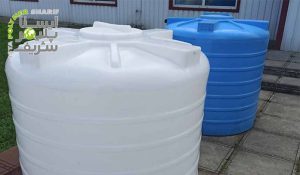Today, due to the scarcity of water and the increase in average water consumption during the hot months of the year, many cities experience low water pressure or even temporary water outages. To address this issue, ABtank recommends installing a water storage tank and a pump. By collecting water in a water tank and boosting the water pressure with an electric pump, we can compensate for water shortages and pressure drops, especially in tall and multi-story buildings. This article will cover how to install and the methods involved.
Location for Installing the Water Tank
Water storage tanks can be placed in two main locations: inside the house (such as in understairs tanks, parking areas, storage rooms, and mechanical rooms) or elevated locations like rooftops. Installing the tank inside the house is generally better and safer as it provides smoother surfaces and protects the tank from environmental factors like sunlight, rain, and temperature extremes. Additionally, the inside of the house is more secure.
If the tank is to be installed in areas like under stairs or in parking spaces, consider the noise and traffic. Furthermore, if the water tank is located below the consumption point (such as in a parking area), a pump is required to ensure the water can reach higher floors, unless it is a single-story or villa-type building.
Important Considerations When Purchasing a Water Tank
After determining the installation location, also consider the method of transporting the tank to that location. Ensure it can be easily brought through the entrance or lifted to the rooftop with a rope if necessary. ABtank uses two types of tanks: galvanized tanks and polypropylene tanks, with the latter being more durable and easier to transport.
The water tank should be placed on smooth boards or stones to elevate it above the ground to allow access to the underside and pipes. Generally, tanks installed above the consumption level (where water moves from top to bottom) do not require a pump. However, if installed in a parking area or yard, a pump will be necessary.
Water Tank Installation Steps
If the plumbing setup for the tank installation is not in place, consult a plumbing specialist to perform the necessary plumbing from inside the building to the installation site and vice versa. The overflow from the tank should be directed to a safe location to ensure proper water discharge and keep it away from electrical systems.
To combat sub-zero winter temperatures, the piping and pump bowl must be insulated with wrapping. Use vibration dampeners to prevent pump vibrations. The tank and pump should be placed according to the layout so that in the event of a power outage, residents can continue using water with normal pressure.






